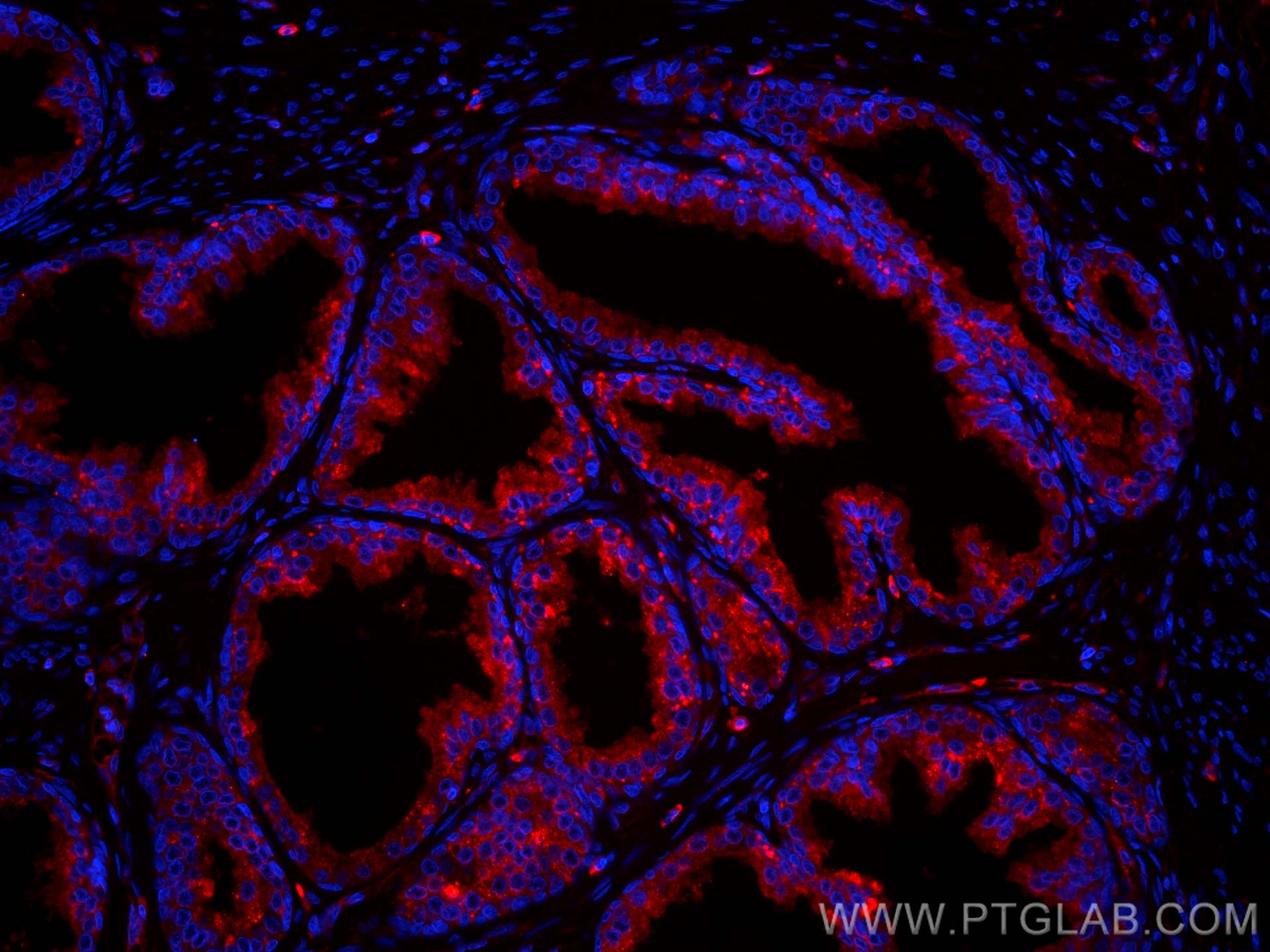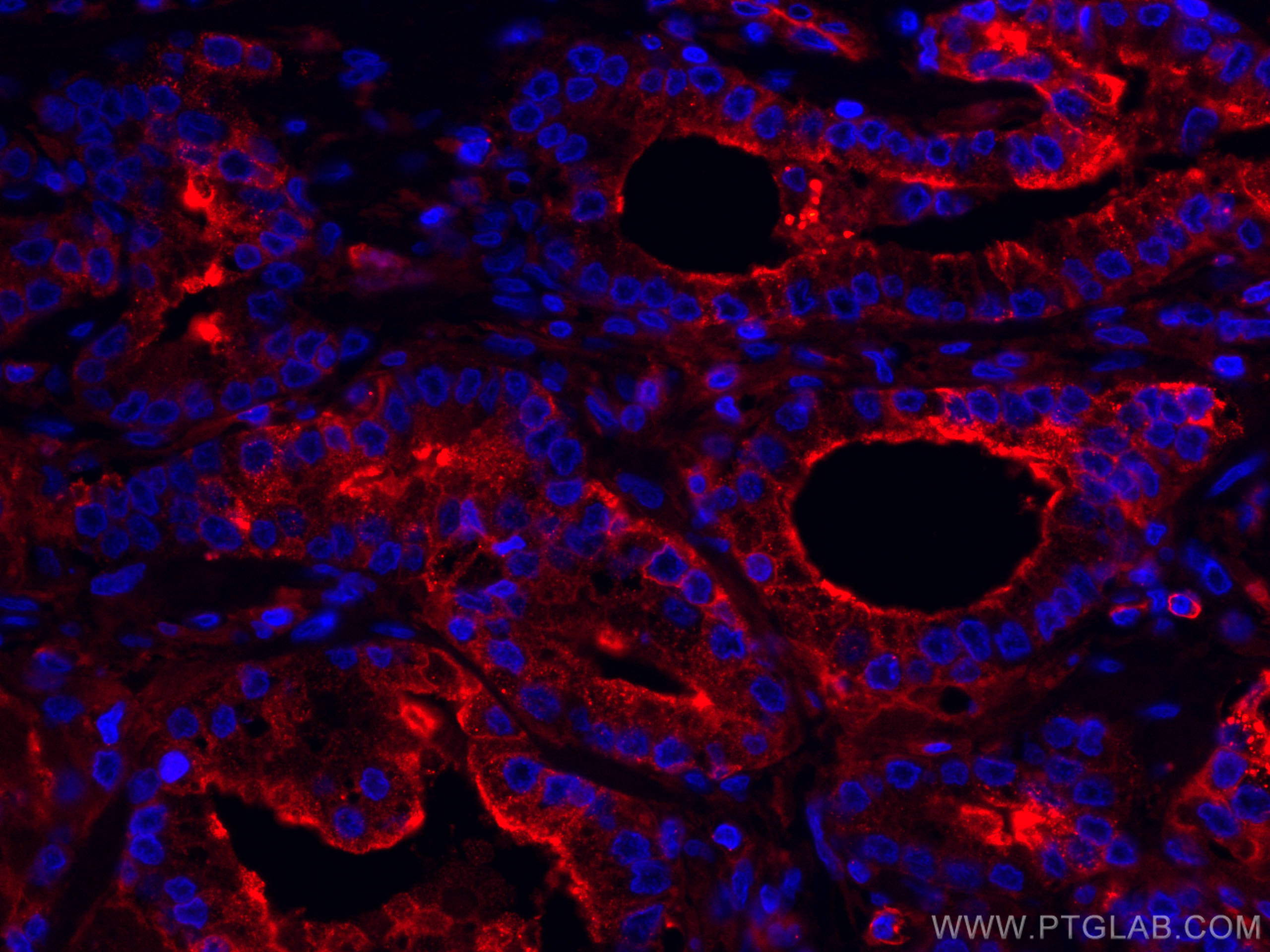Tested Applications
| Positive IF-P detected in | human prostate cancer tissue |
Recommended dilution
| Application | Dilution |
|---|---|
| Immunofluorescence (IF)-P | IF-P : 1:50-1:500 |
| It is recommended that this reagent should be titrated in each testing system to obtain optimal results. | |
| Sample-dependent, Check data in validation data gallery. | |
Product Information
CL594-66207 targets Beta-2-Microglobulin in IF-P applications and shows reactivity with human samples.
| Tested Reactivity | human |
| Host / Isotype | Mouse / IgG2b |
| Class | Monoclonal |
| Type | Antibody |
| Immunogen |
Peptide Predict reactive species |
| Full Name | beta-2-microglobulin |
| Calculated Molecular Weight | 14 kDa |
| Observed Molecular Weight | 13 kDa |
| GenBank Accession Number | BC032589 |
| Gene Symbol | B2M |
| Gene ID (NCBI) | 567 |
| ENSEMBL Gene ID | ENSG00000166710 |
| RRID | AB_2919964 |
| Conjugate | CoraLite®594 Fluorescent Dye |
| Excitation/Emission Maxima Wavelengths | 588 nm / 604 nm |
| Form | Liquid |
| Purification Method | Protein A purification |
| UNIPROT ID | P61769 |
| Storage Buffer | PBS with 50% glycerol, 0.05% Proclin300, 0.5% BSA, pH 7.3. |
| Storage Conditions | Store at -20°C. Avoid exposure to light. Stable for one year after shipment. Aliquoting is unnecessary for -20oC storage. |
Background Information
Beta-2-microglobulin (B2M) is a component of MHC class I molecules, which are present on the surface of nearly all nucleated cells. It can be found in body fluids under physiologic conditions as a result of shedding from cell surfaces or intracellular release. B2M has various biological functions, including antigen presentation. Investigations reveal that increased synthesis and release of B2M are present in several malignant diseases.
Protocols
| Product Specific Protocols | |
|---|---|
| IF protocol for CL594 Beta-2-Microglobulin antibody CL594-66207 | Download protocol |
| Standard Protocols | |
|---|---|
| Click here to view our Standard Protocols |






